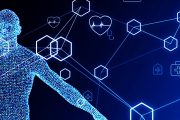Can you imagine a world where the Department of Homeland Security, the National Security Agency, the FBI, Interpol, Los Alamos National Laboratory, the U.S. military, and the state police forces of all 50 states combine to keep you under constant surveillance? Guess what — you’re living in it.
As part of our ongoing effort to expose the tools and tactics being used by the federal government in the expansion of the surveillance state, The New American recently reported on a project sponsored by Defense Advanced Research Projects Agency (DARPA) “to invent new approaches to the identification of people, places, things and activities from still or moving defense and open-source imagery.”
In an update on the progress being made, DARPA described several concepts being worked on by six teams of researchers chosen to live and labor in the “DARPA Innovation House,” located somewhere near George Mason University in Virginia.
While the descriptions of the projects provided by DARPA spokesman Mike Geertsen were brief, greater detail of the technologies was discovered by The New American.
The first of the projects reportedly being cooked up in the DARPA test kitchens is called PetaVision. The DARPA statement describes PetaVision as one of the “Multi-Modal Approaches to Real-Time Video Analysis. Biologically-inspired, hierarchical neural networks to detect objects of interest in streaming video by combining texture/color, shape and motion/depth cues.”
While that summary is admittedly vague, a website maintained by the Los Alamos National Laboratory (LANL) provides a bit more information not only on the technology, but why the federal government might find it useful in its quest to place every American under constant surveillance and to identify potential “domestic terrorists”:
We seek to understand and implement the computational principles that enable high-level sensory processing and other forms of cognition in the human brain. To achieve these goals, we are creating synthetic cognition systems that emulate the functional architecture of the primate visual cortex. By using petascale computational resources, combined with our growing knowledge of the structure and function of biological neural systems, we can match, for the first time, the size and functional complexity necessary to reproduce the information processing capabilities of cortical circuits. The arrival of next generation supercomputers may allow us to close the performance gap between state of the art computer vision approaches by bringing these systems to the scale of the human brain.
The definition of “petascale” is important in order to better understand that statement.
Petascale is defined on Wikipedia as “a computer system capable of reaching performance in excess of one petaflops, i.e. one quadrillion floating point operations per second.” Such systems “will be used to do advanced computations in fields such as weather and climate simulation, nuclear simulations, cosmology, quantum chemistry, lower-level organism brain simulation, and fusion science.”
Admittedly, the potential uses for PetaVision are obscured behind the scientific jargon used in its description. However, empowering the federal government with any technology that can simulate the human brain’s ability to see and process information for the purpose of “detect[ing] objects of interest” in streaming video is terrifying.
As the reports on TrapWire have demonstrated, it is very likely that the video feed from many of the traffic cameras, stoplight cameras, and similar devices may be monitored by agents of the federal government. If the ability of those agents to locate and follow a target increases, the ability of that target to evade detection logically decreases proportionally.
That is to say, once a person has been identified by the federal government as a potential threat, that person will be unable to seek refuge anywhere as emerging technology such as PetaVision will put every spot on the planet within the field of vision of the all-seeing, never-blinking eye of government.
Another tool being hammered out on the DARPA anvils is called Videovor. While no specific information on a technology with that name was found, a website offering scholarly journals covering the topic of visualization of video information was discovered.
On that website an abstract of an article written by scholars at the University of Wales, Swansea (UK) makes immediately apparent the attraction such work has for the domestic spying agencies of the federal government:
Video data, generated by the entertainment industry, security and traffic cameras, video conferencing systems, video emails, and so on, is perhaps most time-consuming to process by human beings. In this paper, we present a novel methodology for “summarizing” video sequences using volume visualization techniques. We outline a system pipeline for capturing videos, extracting features, volume rendering video and feature data, and creating video visualization. We discuss a collection of image comparison metrics, including the linear dependence detector, for constructing “relative” and “absolute” difference volumes that represent the magnitude of variation between video frames. We describe the use of a few volume visualization techniques, including volume scene graphs and spatial transfer functions, for creating video visualization. In particular, we present a stream-based technique for processing and directly rendering video data in real time. With the aid of several examples, we demonstrate the effectiveness of using video visualization to convey meaningful information contained in video sequences.
Among the noteworthy revelations in this abstract is the fact that this technology will be used to render “video data in real time” and that the source of that video feed is to be provided by “security and traffic cameras, video conferencing systems, video emails, and so on.”
It is foreseeable that such immensely powerful video summarizing technologies could be very valuable to the National Security Agency (NSA) employees who will soon be monitoring, recording, and storing the electronic communications of every American using the supercomputers housed at the NSA’s sprawling complex under construction near Salt Lake City, Utah.
Reading the description of the next item on DARPA’s list makes it easy to see why the spy apparatus of the federal government would spend millions supporting the work of scientists who can provide powerful new weapons in the war on privacy. The next weapon: geospatial oriented structure extraction.
As hinted at by the DARPA status report, geospatial oriented structure extraction is designed to deliver “automatic construction of a 3D wireframe of an object using as few images as possible from a variety of angles.”
Again, not much to go on, but a search of the Internet provides a little more color. And the source of the additional information may be another piece of evidence of the dangerous liaison growing between the federal government and local law enforcement.
Nlets is a non-profit organization owned and operated by the states that maintains the National Law Enforcement Telecommunications Systems. This system is an electronic messaging service that facilitates the exchange of information among state and local law enforcement.
An Nlets website under the heading “International Justice and Public Safety” describes a project called “Geospatial Service Oriented Architecture for Public Safety (GeoSOAPS). GeoSOAPS, the website , is co-sponsored by the National Institute of Justice and the Department of Homeland Security. Again, this is the sort of collaboration the Constitution could do without.
In a frightening admission against interest, the website proudly boasts that “Nlets and its member community offer the ideal proving ground for this nationally focused project.”
And just who are the members of the Nlets community? According to its website, every state police force in the United States, the Secret Service, the FBI, the DHS, the Federal Aviation Administration, TSA, the State Department, and Interpol, among others. That is a coalition of immense power, reach, and resources that no one can escape it, neither in the real world nor the virtual world of cyberspace.
This technology will enable “discovery, invocation, assembly, and rendering of shared data.” Where will this data come from? According to Nlets and the DHS it will come from “mobile/handheld computers” that will give the intelligence agents “access to images and local data” that will then be collected and analyzed using the geospatial rendering program.
Once these tools are delivered to DARPA, this vast network of federal spies and local and federal law enforcement will be able to instantly share the data collected from video feeds captured by traffic and stop light cameras located in thousands of street corners in nearly every town in every country around the world — including the United States.
Soon the Fourth Amendment protections against unreasonable searches and seizures will be obviated because the federal government will no longer need to “search” for things in the traditional sense of the word as every place and every person will already be ever-present before its powerful eye and every law enforcement agency in the world will instantly have the images distributed by the supercomputers that gather them.




